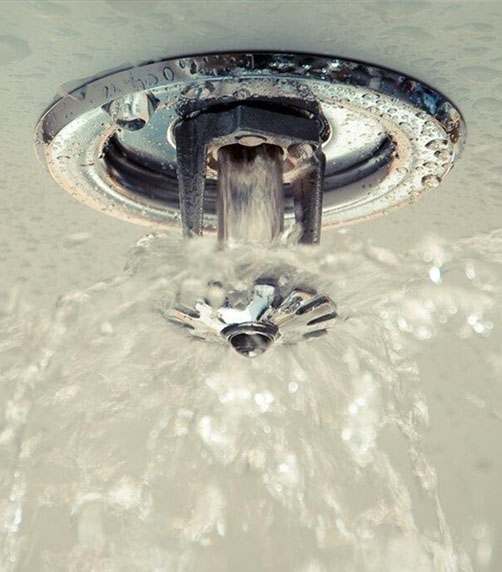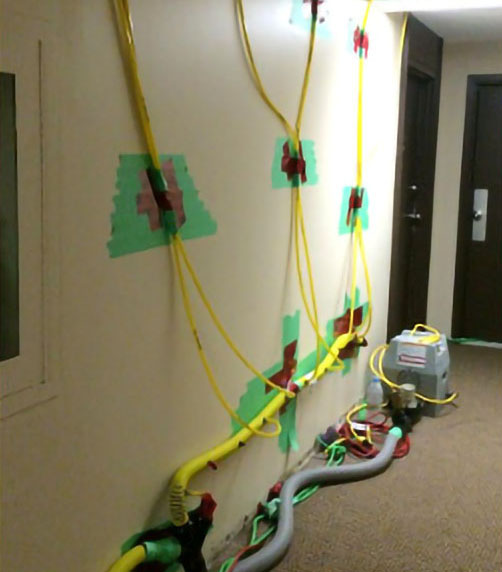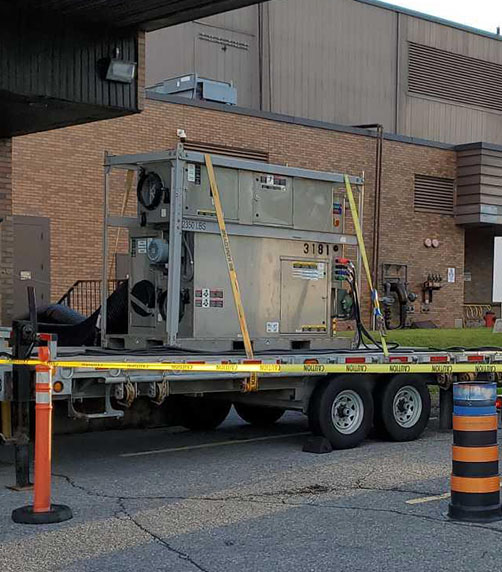Water Damage
At NHC 24/7 we have IICRC certified technicians
Our IICRC certified technicians have been trained to approach each loss with the mindset to mitigate, control humidity and complete all required work efficiently. Which minimizes the total impact of the water loss and ensures the level of service your client receives is to the highest standards, your own.


Multiple Magnitudes of Drying.
We can respond with multiple crews or equipment supervision for large loss, we base our solutions on your specific needs and generate a plan of action to increase your capacity for equipment and crews when you most need it. We provide detailed moisture map sheets for atmospheric conditions and surface drying progress.
Go to Drying ServicesThere are 3 categories of water damage that determine how a loss is processed:
Clean Water: A liquid from a clean and sanitary source.
Grey Water: A liquid described as having a level of contaminants that may cause illness or discomfort if ingested.
Black Water: The highest level of contamination and is grossly unsanitary. It could cause severe illness or death if ingested. Most commonly referred to as a sewer backup.
4 Classes of destruction that determine the significance of the loss and type of drying procedure required:
#1 Easiest to deal with, slow and low evaporation rate. Only part of a room or area was affected, there is little or no wet carpet, and the moisture has only affected materials with a low permeance rate, such as plywood or concrete.
#2 With a fast evaporation rate, this level affects an entire room, carpeting, or cushioning, the wetness has wicked up the walls at least 12”, and there is moisture remaining in structural materials.
#3 This class has the fastest evaporation rate, and ceilings, walls, insulation, carpet and sub-floors are all saturated. The liquid may have come from overhead.
#4 This class is labelled as specialty drying situations, which means there has been enough liquid and time to saturate materials with very low permeance, such as hardwood, brick, or stone.
Additional Information
Typical dry time for a loss:
This depends on many factors. What type of water category, what class, how large of an area and what materials are subjected to the water. The category will determine if we are required to remove materials or if they can be dried in place.
Once mitigation services have started, you can expect at a minimum, 2-5 days for materials to reach a dry standard. Some losses can require +/- 30 days to dry dense materials such as concrete, large structures with multiple layers or specialty rooms such as static and dust-free areas.

Crew assesses damages and scope of work required then starts with water extraction. Contents processing to determine if items are damaged or salvageable. List damaged contents and add to a Non-Salvage Item list that is associated with photos. Review with the property owner or manager. In some cases, contents will have to be packed and moved to other locations within the home or off-site to our climate-controlled warehouse for storage until the remediation work has been completed and the property is restored to its pre-loss condition.
Start with removal of affected materials, if required, or set drying equipment to start the drying process. Complete a detailed surface moisture map along with atmospheric conditions. It may take several days to complete the contents processing and material removal depending on the amount of damage. Structural drying through the use of dehumidification and air movement. Monitoring of equipment. Pick up equipment once all areas have been verified to be dry. For further information, please visit www.iicrc.org.





